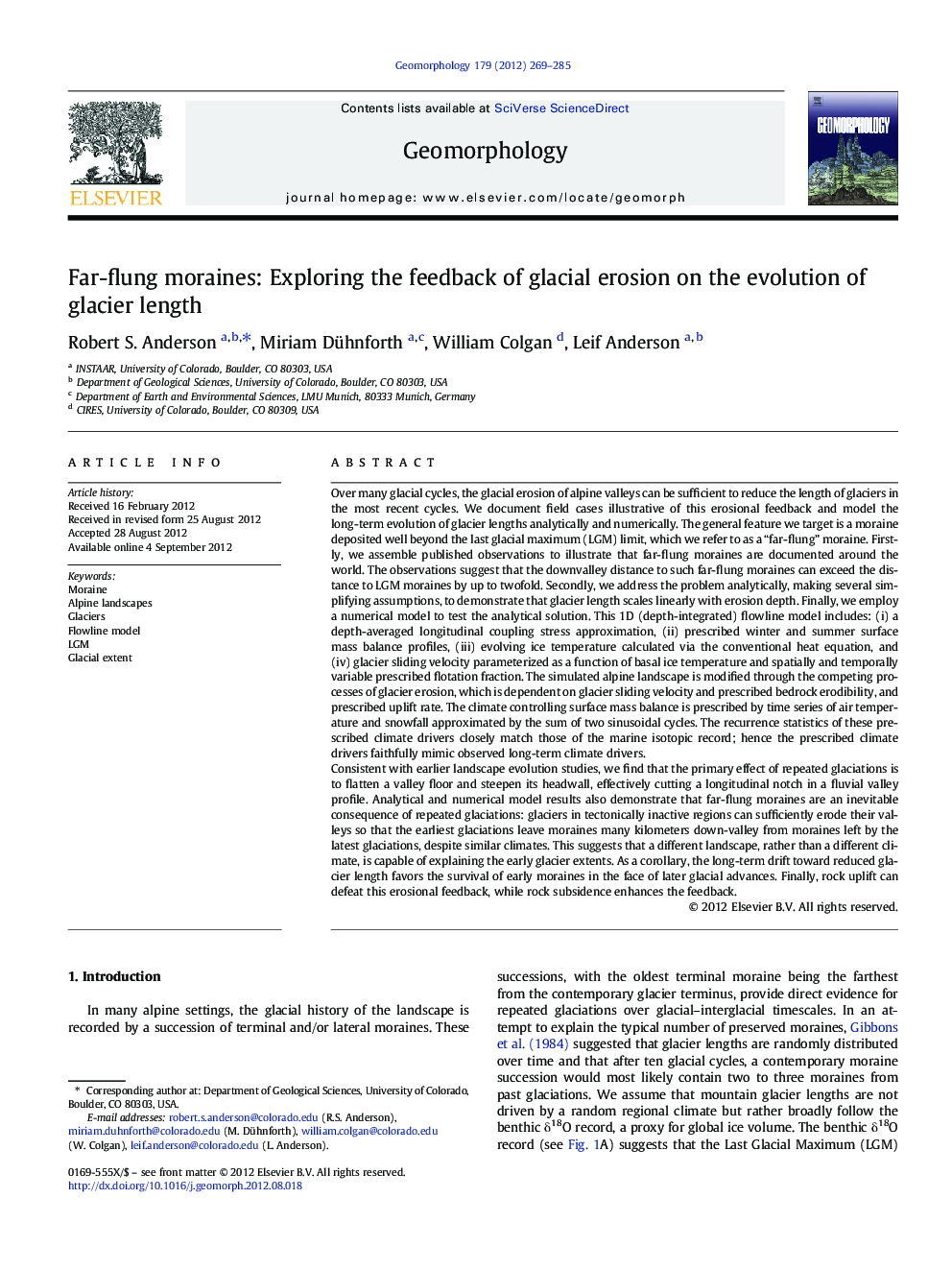| کد مقاله | کد نشریه | سال انتشار | مقاله انگلیسی | نسخه تمام متن |
|---|---|---|---|---|
| 4685069 | 1635469 | 2012 | 17 صفحه PDF | دانلود رایگان |

Over many glacial cycles, the glacial erosion of alpine valleys can be sufficient to reduce the length of glaciers in the most recent cycles. We document field cases illustrative of this erosional feedback and model the long-term evolution of glacier lengths analytically and numerically. The general feature we target is a moraine deposited well beyond the last glacial maximum (LGM) limit, which we refer to as a “far-flung” moraine. Firstly, we assemble published observations to illustrate that far-flung moraines are documented around the world. The observations suggest that the downvalley distance to such far-flung moraines can exceed the distance to LGM moraines by up to twofold. Secondly, we address the problem analytically, making several simplifying assumptions, to demonstrate that glacier length scales linearly with erosion depth. Finally, we employ a numerical model to test the analytical solution. This 1D (depth-integrated) flowline model includes: (i) a depth-averaged longitudinal coupling stress approximation, (ii) prescribed winter and summer surface mass balance profiles, (iii) evolving ice temperature calculated via the conventional heat equation, and (iv) glacier sliding velocity parameterized as a function of basal ice temperature and spatially and temporally variable prescribed flotation fraction. The simulated alpine landscape is modified through the competing processes of glacier erosion, which is dependent on glacier sliding velocity and prescribed bedrock erodibility, and prescribed uplift rate. The climate controlling surface mass balance is prescribed by time series of air temperature and snowfall approximated by the sum of two sinusoidal cycles. The recurrence statistics of these prescribed climate drivers closely match those of the marine isotopic record; hence the prescribed climate drivers faithfully mimic observed long-term climate drivers.Consistent with earlier landscape evolution studies, we find that the primary effect of repeated glaciations is to flatten a valley floor and steepen its headwall, effectively cutting a longitudinal notch in a fluvial valley profile. Analytical and numerical model results also demonstrate that far-flung moraines are an inevitable consequence of repeated glaciations: glaciers in tectonically inactive regions can sufficiently erode their valleys so that the earliest glaciations leave moraines many kilometers down-valley from moraines left by the latest glaciations, despite similar climates. This suggests that a different landscape, rather than a different climate, is capable of explaining the early glacier extents. As a corollary, the long-term drift toward reduced glacier length favors the survival of early moraines in the face of later glacial advances. Finally, rock uplift can defeat this erosional feedback, while rock subsidence enhances the feedback.
Journal: Geomorphology - Volume 179, 15 December 2012, Pages 269–285